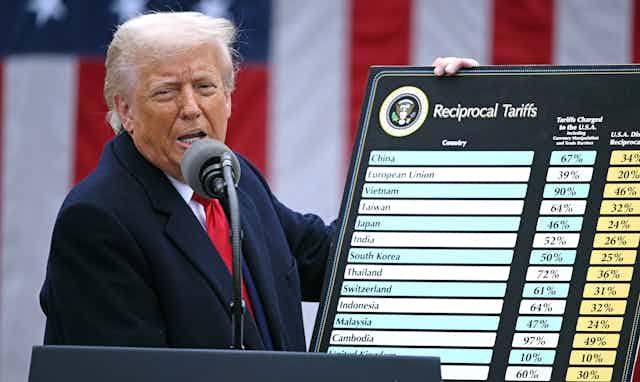I’m thrilled to announce that in 2017 Google will reach 100% renewable energy for our global operations — including both our data centers and offices. This is a huge milestone. We were one of the first corporations to create large-scale, long-term contracts to buy renewable energy directly; we signed our first agreement to purchase all the electricity from a 114-megawatt wind farm in Iowa, in 2010. Today, we are the world’s largest corporate buyer of renewable power, with commitments reaching 2.6 gigawatts (2,600 megawatts) of wind and solar energy. That’s bigger than many large utilities and more than twice as much as the 1.21 gigawatts it took to send Marty McFly back in time.

To reach this goal we’ll be directly buying enough wind and solar electricity annually to account for every unit of electricity our operations consume, globally. And we’re focusing on creating new energy from renewable sources, so we only buy from projects that are funded by our purchases.
Data centers are the backbone of the internet, processing and storing huge amounts of information. Our engineers have spent years perfecting Google’s data centers, making them 50 percent more energy efficient than the industry average. But we still need a lot of energy to process trillions of Google searches every year, play more than 400 hours of YouTube videos uploaded every minute, and power the products and services that our users depend on. That’s why we began purchasing renewable energy — to reduce our carbon footprint and address climate change. But it also makes business sense.
Over the last six years, the cost of wind and solar came down 60 percent and 80 percent, respectively, proving that renewables are increasingly becoming the lowest cost option. Electricity costs are one of the largest components of our operating expenses at our data centers, and having a long-term stable cost of renewable power provides protection against price swings in energy.
Our 20 renewable energy projects also help support communities, from Grady County, OK, to Rutherford County, NC, to the Atacama Region of Chile to municipalities in Sweden. To date, our purchasing commitments will result in infrastructure investments of more than $3.5 billion globally, about two-thirds of that in the United States. These projects also generate tens of millions of dollars per year in revenue to local property owners, and tens of millions more to local and national governments in tax revenue.
So, we’re on track to match our global energy consumption on an annual basis by next year. But this is just the first step. As we look to the immediate future, we’ll continue to pursue these direct contracts as we grow, with an even greater focus on regional renewable energy purchases in places where we have data centers and significant operations. Since the wind doesn’t blow 24 hours a day, we’ll also broaden our purchases to a variety of energy sources that can enable renewable power, every hour of every day. Our ultimate goal is to create a world where everyone — not just Google — has access to clean energy. For more on these next steps, read our white paper.
Operating our business in an environmentally sustainable way has been a core value from the beginning, and we’re always working on new ideas to make sustainability a reality — like enabling the building of healthy workplaces and creating a living, breathing dashboard for the planet. We’ve reported our carbon footprint and published information on our sustainability programs for many years in white papers, blog posts, and on our website. Now, we’ve put all this information together in a new Environmental Report.
You can also check out our new environment website, where we share stories of how we are finding new ways to do more while using less. Most of our on-campus sustainability initiatives were started by a few passionate Googlers, and have now grown into company-wide efforts. From the solar panels on our roofs to our bike-to-work program, these initiatives sit at the heart of our company culture and help both us and our users reduce our impact on the environment.
The science tells us that tackling climate change is an urgent global priority. We believe the private sector, in partnership with policy leaders, must take bold steps and that we can do so in a way that leads to growth and opportunity. And we have a responsibility to do so — to our users and the environment.
We have lots of progress left to make, but these achievements we’re announcing today feel like a breath of fresh air. Now, back to work.
Urs Hölzle
Senior Vice President of Technical Infrastructure
Google
Greening the grid: how Google buys renewable energy
Let’s say it’s 2009. You’re a global technology company, and you need very large amounts of renewable energy. How do you get it?
Ideally, you would just buy it from your local utility. But you can’t, at least not yet: Most utilities are still heavily regulated entities whose business model — keep the lights on and prices reasonable — lacks both mechanisms and incentives to respond to customer requests for renewable energy.
Next, you might think about producing it yourself: Build renewable plants where you have demand — i.e., very close to your data centers. But most data center locations aren’t ideal for large-scale wind or solar production, and behind-the-meter on-site projects can’t meet these facilities’ 24-7 energy needs.
And this is all a big problem. Sixty-seven percent of all electricity in the U.S. is produced by burning fossil fuels, which accounts for nearly a third of America’s greenhouse gas emissions. This has to change. “We’re a data-driven company,” says Gary Demasi, director of Data Center Energy and Location Strategy for Google. “The science of climate change tells us that building a carbon-free electrical grid is an urgent global priority.” As data centers are one of the world’s fastest-growing electricity users, it’s good business sense for Google to go sustainable and good corporate citizenship to help others move in that direction.
In 2009, our data center energy team began to study power purchase agreements (PPAs): large-scale, long-term contracts to buy renewable energy in volumes that would meet the needs of our business. The idea behind using a PPA is simple: Google can’t buy clean energy from our utilities because of regulatory restrictions on our retail contract, and we can’t produce nearly enough of it behind the meter at our data center facilities because of physical and geographical restrictions. But we can buy it at the wholesale level directly from developers on the same grids where we operate our data centers.
From a physical perspective, this is just as good as consuming the renewable energy directly. That’s because electricity on a grid is fungible; electrons generated in one spot can’t be directed to any specific user on the grid, any more than a cup of water poured into a river could be directed to a particular stream. So it doesn’t make much of a difference where the renewable energy that we buy is located, as long as it’s on the same grid as our data center.
From a contractual perspective, it’s less than ideal, but because regulated utilities offer few if any retail options to purchase renewable energy, this is often the only way to purchase utility-scale renewables on the same grids where we have consumption. The question becomes, “How do you get ‘credit’ at the retail level for the renewable energy you’re purchasing at the wholesale level?”
The answer is the renewable energy certificates (RECs) issued by the renewables industry to record every unit of energy that’s produced by renewable means. Producers can use RECs to verify how much clean energy they produce, and consumers can buy that verification to match against their consumption. When Google buys renewable energy, in addition to the physical power we also buy its corresponding RECs. We then sell the renewable electricity back to the wholesale market but retain the RECs. We run our facilities with ordinary power purchased from local utilities and permanently “retire” the RECs against our actual energy consumption, thus reducing our carbon footprint.
It’s a convoluted system, but long-term PPA contracts do offer Google the certainty of knowing how much we’ll be paying for future energy, while providing renewable energy developers the stability to finance and build new projects — thereby upholding the “additionality” principle that every power deal should add more renewable energy to the grid. “This purchasing structure wasn’t optimal, of course, since we essentially have to buy power ‘twice’ — once at the wholesale level and again at the retail level,” Demasi says. “But in 2009 optimal didn’t exist.”
So in 2010 Google applied to the Federal Energy Regulatory Commission for market-based rate authority, which is the right to buy and sell power in U.S. wholesale electricity markets, something that very few other nonenergy companies had obtained at the time. We entered our first PPA later that year, with a 20-year agreement with a 114 -megawatt-capacity wind farm in Iowa.

In the six years since the cost of renewables has plummeted — wind energy is down 60% and solar down 80%. And unsurprisingly, PPAs have boomed; Google has signed 19 more agreements with a variety of structures (including PPAs) totaling nearly 2.6 gigawatts of renewable energy in the U.S., Europe, and South America, and the U.S. corporate PPA market has grown 60% year over year. We’re particularly pleased that in some markets, like Northern Europe and Chile, we’re able to buy from a developer through a PPA and then supply that renewable energy directly to our local data centers. “Many new projects have been built around the world,” Demasi says, “because of the commitment that Google made.”
We’ve had great success securing significant amounts of renewable energy at rates that are competitive with nonrenewable sources, proving that you can do great things for the planet and support the bottom line. But in many ways, PPAs remain an imperfect model. And although there are more options today than there were in 2009, few utilities offer renewable energy to their customers. “A huge evolution needs to occur in the utility sector,” Demasi says, “for us to be able to buy the power we want from the source we want with the contractual flexibility and agility we need.” The industry is making good progress. But we’re still a long way from an ideal system for bringing renewable power from where the wind blows and the sun shines to where people live and work.
Further reading
-
December, 2016
Achieving Our 100% Renewable Energy Purchasing Goal and Going Beyond
We’re excited to share our story of achieving our 100% renewable energy purchasing goal, the lessons we learned along the way, and our plans for going beyond 100%
-
December, 2015
Powering the Internet with renewable energy
Today we’re announcing the largest, and most diverse, purchase of renewable energy ever made by a non-utility company.
-
September, 2013
Google’s Green PPAs: What, How, and Why
Google has pledged to reduce its carbon footprint to zero through the purchase and use of carbon-free renewable electricity to power our data centers.
-
April, 2013
Expanding Renewable Energy Options for Companies Through Utility-Offered Renewable Energy Tariffs
This white paper outlines a new, more scalable approach that will allow a broad range of companies like Google to buy large amounts of renewable power directly from electric utilities.




35 Comments
Pingback: คาสิโนออนไลน์
Pingback: mejaqq
Pingback: Best Pain Killers
Pingback: เวลาออกรางวัล และ ปิดรับแทง หวยเวียดนาม
Pingback: สล็อตเว็บตรงไม่ผ่านเอเย่นต์
Pingback: dating sites
Pingback: เว็บตรง
Pingback: 웹툰 사이트
Pingback: แทงบอล 4 ตังค์
Pingback: เว็บหวยออนไลน์
Pingback: ทดลองเล่นสล็อต pp
Pingback: คอนโดให้เช่า
Pingback: ทางเข้าเล่น jili slots
Pingback: sideline
Pingback: Jacksonville SEO
Pingback: betwinner la mejor opci n para apuestas de league of legends
Pingback: obeng bet
Pingback: รักษาสิว
Pingback: wyld edibles
Pingback: safe dayz cheat
Pingback: สล็อตเว็บใหญ่ PG
Pingback: vr chat
Pingback: 789BET
Pingback: Kubet คาสิโนฝากถอนง่าย
Pingback: Lsm99queen เว็บตรงไม่ผ่านเอเย่นต์
Pingback: couples massage
Pingback: แนะนำ เว็บแจกเครดิตฟรี
Pingback: Fulfillment
Pingback: โรงแรมแมวนครสวรรค์
Pingback: รองเท้าเซฟตี้
Pingback: fortune mouse
Pingback: Diyala University 1st
Pingback: pg slot auto
Pingback: pg168
Pingback: desenvolvedor de jogos Fortune Tiger